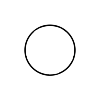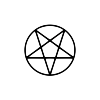Mask / Mind / Mood
I was lucky enough last week to catch The Phantom of the Opera (1925) on the big screen accompanied by a live orchestral performance of the Roy Budd score. A perfect Halloween screening. I also watched Irish folk horror and a moody, urban ghost story (light spoilers for all) . . .

From the Grave.
Three ideas from horror cinema's past.
- Secret lairs & layers. Horror loves an exhumation, loves revealing the hidden things buried out of sight. The Phantom of the Opera embraces this impulse in a dense, extravagant way—obsessing over secret layers, over appearances and the hidden realities beyond them. Its vision of the city and its institutions imagines the spaces we move through as resting atop or aside secret passages, subterranean chambers, and dungeons. An opera house proves a resonant portal to this world, as theaters themselves are places of sets and make-believe—of appearances—all hiding another reality backstage. Moving backstage, through a mirror to a secret passageway, into the dungeons, we find the The Phantom of the Opera’s iconic secret layer—the real, horrific face beneath The Phantom’s mask. The abiding sense here is that physical reality, if we know how to approach it, will open up to reveal something deeper—a truer, more monstrous reality waiting out of sight.
- The eye test. Horror wrestles with monstrousness as a moral or physical condition. We are accustomed to the deviant grotesque but also the sympathetic, misunderstood creature. There’s also the descent into moral monstrousness of the “freak” who finds him or herself cast out. And there’s the beautiful monster, the daughter of darkness, the gorgeous or handsome thing whose beauty masks the monster underneath. The Phantom is a moral monster (he’s called “The Strangler,” among other things), but he’s a physical monster first. The Phantom of the Opera organizes itself around its central reveal, where Christine pulls loose The Phantom's mask, revealing one of the classic monstrous images in cinema, courtesy of Lon Chaney’s wild, virtuosic makeup work. It’s this moment too when Christine, who’s been cautiously willing to listen to The Phantom, to call him “master,” to go with him down into the dungeons beneath the opera, finally recognizes him as a monster. Moral and physical monstrousness might both be culturally contingent—what we condemn and what we find ugly are not static, solid, or universal—but there’s a sense in Phantom that the physical, the aesthetic, is more legible. The moral requires inquiry where the aesthetic elicits instant judgment.
- Process 2 and you. The "Bal Masqué" scene in Phantom, in which The Phantom arrives at a masquerade ball in costume as the “Red Death," stood out to me, watching on the big screen, as one of the more beautiful experiences of color in my filmgoing life. Shot in Process 2 two-color Technicolor, its distinctive palette (the reds and greens pop especially) appeals for its bright, jeweled color effects, but also for its freshness. This is a kind of color that our eyes almost never encounter. Filmmakers push color in many different ways, but they’re always starting from visual baselines set by film technology. Each era has its common range of technologies, from camera choice through color correction software. Process 2 Technicolor represents an entirely other visual starting point. It is color, to our eyes in the present, from another world. The "Bal Masqué" scene reminds us of the technological constraints on the film image and of the new reaches of beauty and expression represented by alternative technologies—whether archaic, unpopular, or on the horizon.

Right Behind You.
A thought on horror's present.
- Too much stuff. Aislinn Clarke’s slow-burn Irish folk horror Fréwaka overfills its rooms with objects: bottles, lamps, taxidermy, talismans, dolls, and tchotchkes. The production design here is beyond maximalist. It’s a movie about the tangle of the mind and history, and the rooms echo the troubled, cluttered minds of its characters. Fréwaka is also about obsessive vigilance against threatening, supernatural forces, and these overstuffed spaces (some of their objects actual charms and amulets) demonstrate the desperate acquisition these characters have undertaken. Clarke's made, in these rooms, visual keys to the lives and psyches that propel Fréwaka.

Living Deliciously.
A recommendation.
- A melancholy haunting. There’s much to recommend in Elric Kane’s The Dead Thing and in Blu Hunt’s lead performance, but I’m particularly struck by the mood. The Dead Thing is never heavy, but it is dark—the predominant tone is melancholy. This is a film about a young person in a city: Hunt’s Alex is unmoored and isolated, even if there are people around her. She’s taking solitary walks through empty plazas, earbuds firmly in place. She’s ultimately, inevitably confronting conflicted, messy feelings about her relationship (it is, after all, with a ghost). The melancholy here is recognizable, the atmosphere of a stretch of life where we can find ourselves alienated from a world that doesn't quite feel solid. It’s a perfect mood for a ghost story.
Dead of Night publishes every Tuesday. This morning during an ICE raid at a Home Depot in Cypress Park, a toddler was detained and hit in the face with a ball thrown by an ICE agent, a U.S. citizen was detained and his wrist was fractured, and another man was pepper sprayed from a few inches away. The moment to resist fascism is now.